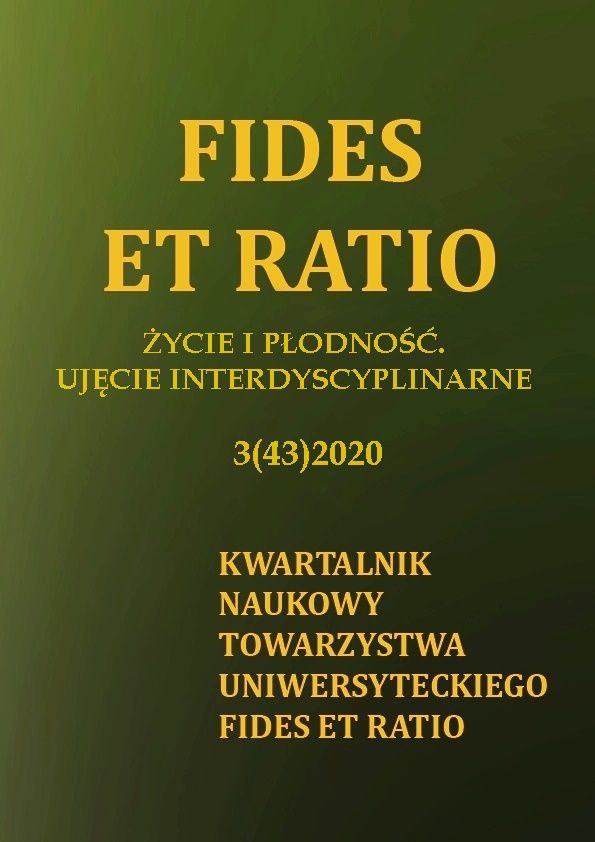Abstract
Sexual abstinence is a periodic or permanent renouncement of sexual activity. Sexual abstinence, in the context of stages of human psychophysical development, is a natural phenomenon occurring with varying intensity during life. An important factor characterizing periodic or permanent sexual abstinence is its purposefulness and awareness of the decision not to engage in sexual activity. Objective. The aim of the study was to analyze selected aspects of the attitude of men living in stable relationships towards periodic sexual abstinence. Material and methods. The research was carried out using the diagnostic survey method based on the author's questionnaire. The study was conducted among 453 men living in a stable relationships. Participants were divided into a study group (men who had ever used periodic sexual abstinence, 57%) and a benchmark group (men who never used periodic sexual abstinence, 43%). In statistical analyzes, a significance level of p<0,05 was adopted. Statistical analysis of the results was made using IBM SPSS Statistics 23. Results. (1) The results obtained indicate that the attitude towards sexual abstinence was associated with the understanding of this concept in the study group (p<0,05) and overall (p<0,01). A positive attitude towards sexual abstinence significantly correlated with the understanding of the concept of sexual abstinence as a total lack of sexual activity. (2) The positive attitude towards sexual abstinence was statistically significantly associated with its practice (p<0,001). (3) The positive attitude towards sexual abstinence positively correlated with the declaration of promotion of sexual abstinence to other couples (p<0,001).
References
Alhassan, N., Dodoo, F.N. (2020). Predictors of primary and secondary sexual abstinence among never-married youth in urban poor Accra, Ghana, Reproductive Health, 17 (1), 28. https://doi.org/10.1186/s12978-020-0885-4
Beutel, M.E., Burghardt, J., Tibubos, A.N., Klein, E.M., Schmutzer, G., Brähler, E. (2018). Declining Sexual Activity and Desire in Men-Findings From Representative German Surveys, 2005 and 2016, The Journal of Sexual Medicine, 15 (5), 750-756. https://doi.org/10.1016/j.jsxm.2018.03.010.
Buse, K., Hildebrand, M., Hawkes, S. (2016). A farewell to abstinence and fidelity?, Lancet Glob Health, 4 (9), 599-600. https://doi.org/10.1016/S2214-109X(16)30138-3.
Christensen, B.S., Grønbaek, M., Osler, M., Pedersen, B.V., Graugaard, C., Frisch, M. (2011). Associations between physical and mental health problems and sexual dysfunctions in sexually active Danes, The Journal of Sexual Medicine, 8 (7), 1890-1902. https://doi.org/10.1111/j.1743-6109.2010.02145.x.
Corona, G., Lee, D.M., Forti, G., et al. (2010). Age-related changes in general and sexual health in middle-aged and older men: results from the European Male Ageing Study (EMAS), The Journal of Sexual Medicine, 7 (4Pt1), 1362-1380. https://doi.org/10.1111/j.1743-6109.2009.01601.x.
Donnelly, D., Burgess, E., Anderson, S., Davis, R., Dillard J. (2001). Involuntary celibacy: A life course analysis, Journal of Sex Research, 38 (2), 159-169. https://doi.org/ 10.1080/00224490109552083.
Donnelly, D.A., Burgess, E.O. (2008). The Decision to Remain in an Involuntarily Celibate Relationship, Journal of Marriage and Family, 70, 519–535.
Irfan, M., Hussain, N.H.N., Mohd Noor, N., Mohamed, M., Bahari Ismail, S. (2020). Sexual Abstinence and Associated Factors Among Young and Middle-Aged Men: A Systematic Review, The Journal of Sexual Medicine, 17, 412-430.
Kim, J.H., Lau, J.T., Cheuk, K.K. (2009). Sexlessness among married Chinese adults in Hong Kong: prevalence and associated factors, The Journal of Sexual Medicine, 6 (11), 2997-3007. https://doi.org/10.1111/j.1743-6109.2009.01367.x.
Kim, J.H., Tam, W.S., Muennig, P. (2017). Sociodemographic Correlates of Sexlessness Among American Adults and Associations with Self-Reported Happiness Levels: Evidence from the U.S. General Social Survey, Archives of Sexual Behavior, 46 (8), 2403-2415. https://doi.org/10.1007/s10508-017-0968-7.
Lew-Starowicz, Z. (2000). Seks w jesieni życia, Warszawa: Bellona.
Vande Vusse, L., Hanson, L., Fehring, R.J., Newman, A., Fox, J. (2003). Couples' views of the effects of natural family planning on marital dynamics, Journal of Nursing Scholarship, 35 (2), 171-176. https://doi.org/10.1111/j.1547-5069.2003.00171.x.
Wawrzyniak, J. (2011). Seksualność osób 50 plus – wybrane konteksty analizy zjawiska, Edukacja Dorosłych, 1, 65-75.
Yakubu, I., Garmaroudi, G., Sadeghi, R., Tol, A., Yekaninejad, M.S., Yidana, A. (2019). Assessing the impact of an educational intervention program on sexual abstinence based on the health belief model amongst adolescent girls in Northern Ghana, a cluster randomised control trial, Reproductive Health, 16 (1), 124. https://doi.org/10.1186/s12978-019-0784-8.

